The year of the rookie in Major League Baseball has passed. Kris Bryant, Noah Syndergaard, Carlos Correa and many others left the prospect ranks behind in 2015. But the 2016 class of prospects has a chance to make plenty of noise and impact just as many playoff races -- both in MLB and in fantasy leagues.
To kick off our 2016 coverage, we bring you the top 50 prospects for the upcoming season. Please note these are not your traditional prospect rankings. Keith Law has you covered for that. Instead, this list considers which players have the most value to contribute to fantasy teams right now.
In addition to talent, things like playing time, ability to fill up standard scoring categories and position are heavily considered. There are a number of things that can and will happen during the next few weeks that will skew playing time -- and where a prospect starts the season -- so check back for updated rankings once the season nears.
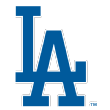
1. Corey Seager, SS, Los Angeles Dodgers
Analysis: Seager's nickname should be "The Consensus." He is the top prospect on nearly every list. For many of the same reasons, he takes pole position here. The younger brother of Kyle Seager made his long-awaited debut in September of last season, and he wasted no time displacing Jimmy Rollins from the Dodgers' lineup. He hit .337/.425/.561 with 13 extra-base hits in 113 big league plate appearances. He tallied 58 extra-base hits across two minor league levels prior to his call-up. He can hit for average and power with a maturity that is beyond his 21 years of age. The one category he lags in is steals. That said, he will have a shot at double digits there, as well.
For at least the 2016 season, he will do all of this as a shortstop, only increasing his value. Even if he does move off the 6 spot, the potential to hit .300 with upward of 30 home runs in the middle of a talented lineup will make him a candidate as a top fantasy pick for years to come.
Mid-March update: A left knee sprain has limited Seager for most of March. The hope he is will be back in time for Opening Day, if not sooner.

2. Steven Matz, LHP, New York Mets
Analysis: Unlike Seager, the opinion on Matz is less uniform. Keith Law ranked him in the mid-30s on his list, citing durability concerns. He checks in at No. 2 here because he has the chance to make a bigger impact and serve a larger role than any other rookie hurler.
Law's concerns are valid. Matz has never tossed more than 150 innings in a season. However, he pitched 140 2/3 innings in 2014 and a career-high 141 frames last season, including 35 2/3 in the majors. Matz has three pitches that grade out average or better. The attack starts with a mid-90s fastball, followed by a plus changeup. The off-speed offering is good enough to fend off platoon splits, while the upper-70s breaking ball should keep fellow lefties off balance. He controls all three pitches well, which should translate into a healthy strikeout-to-walk rate. Once more, the health of his body is the largest question left to be answered.
Mid-March update: Matz has had some recent struggles, but is still in line to be the Mets' fifth starter when the turn comes.
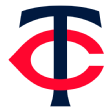
3. Byron Buxton, OF, Minnesota Twins
Analysis: Buxton had as much helium as any other prospect heading into 2015. However, unlike the many studs from the same class, his hype balloon has deflated a bit due to a poor showing at the top level. The former second overall pick is a dynamic defensive center fielder that can run with the best of them. He was promoted, perhaps prematurely, from Double-A to the majors, where he struggled out of the gate before missing time with a thumb injury. He performed slightly better upon return, but he is not as polished as Seager due to a lack of experience at the upper levels.
Depending on what happens in Fort Myers this spring, he could break camp with the Twins or spend time at Triple-A getting those reps. He still projects to be an above-average hitter -- although his aggressive approach might weigh down his on-base percentage -- with double-digit home runs and the chance to win the stolen base title.
Mid-March update: The 22-year-old is pencilled in as the Twins' starting center fielder.
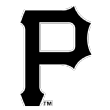
4. Tyler Glasnow, RHP, Pittsburgh Pirates
Analysis: You could make the argument that Glasnow is the third-best starting pitcher in Pittsburgh's organization. Meanwhile, the contending Pirates were wise to bring in veterans like Ryan Vogelsong and Jonathon Niese in lieu of resting some of their playoff hopes on an unproven youngster. If Glasnow pitches up to his height and ability, overtaking a veteran should not be a tall task.
Barreling down from his nearly 7-foot frame, he tosses a hard fastball in the mid-90s that is flanked by a curveball that is a MLB-caliber pitch. The development of his changeup, which at times is thrown a bit too hard, will factor into his ultimate ceiling. As it stands, he has two bona fide offerings with decent control and the body to take the ball 30-plus times a year. If the changeup develops or should the control improve and manifest into command, look out.
Mid-March update: Glasnow will start the season in Triple-A, working on his command before a probable mid-season call-up.

5. Kenta Maeda, RHP, Los Angeles Dodgers
Analysis: While he isn't your typical prospect -- due to his age (27) and experience (eight seasons with the Hiroshima Carp) -- Maeda is a rookie in the eyes of Major League Baseball, and thus qualifies for this list. The slender right-hander will need to rely on manipulating speeds with his changeup and a slider (he also has a curveball) and location -- which should be easy given his ability to control the zone -- to make up for the lack of overpowering stuff (low-90s fastball) and size.
Though he has proven to be durable as a professional in Japan, there is pause about his previous workload and how that will impact his future ability to start. His incentive-laden contract basically confirms those concerns as real. Nonetheless, he has the chance to rack up a lot of wins on a talented Dodgers club while potentially contributing positively in ERA and WHIP.
Mid-March update: Maeda has been impressive this spring and will be a key figure in an ever-changing Dodgers' rotation.

6. Byung-Ho Park, 1B/DH, Minnesota Twins
Analysis: Park could be three or four spots too low on this list or he could be wildly overrated and not even worthy of inclusion. That illustrates the span of uncertainty surrounding the former Korean Baseball Organization (KBO) MVP. A dynamic hitter in terms of both average and power in Korea, there is a fair amount of question about how the hit tool will translate -- specifically, his bat speed versus the American game's velocity.
On the plus side, many believe he will continue to hit for power, although not at his previous rate. He provides little to none in terms of position flexibility, and not much is expected from his legs. There is a fair chance he hits .220 with some long balls sprinkled in between the outs. Conversely, he could hit .275 and belt 30 home runs. The potential for the latter, as well as the strong opportunity for regular at-bats, lands him in the top 10 for now.
Mid-March update: Park has hit well this spring, displaying the power potential the Twins hoped for. He should receive plenty of plate appearances in the middle of Minnesota's order.

7. Jose Berrios, RHP, Minnesota Twins
Analysis: Another Twin makes it into the top 10, and it is easy to see why Keith Law has them as a top-three farm system even without Park's inclusion. If you followed our lists from last season, you will remember that I am all-in on Berrios. The lack of size, along with a lack of zip and movement on the fastball are valid points of unease. He is listed at 6-foot, 185 pounds, and the fastball can sometimes look like a 92 mph arrow to the target.
On the other hand, he made it through a full schedule of starts last season and has two above-average secondary pitches with the ability to control and command location. The development of his changeup last season should offset some of the fastball concern, as hitters will have to determine which pitch is coming midflight while adjusting for speed. Meanwhile, the curveball can generate outs now. As was the case last season, it is a matter of when the Twins will give Berrios the opportunity. He's ready.
Mid-March update: Berrios has struggled with control this spring and will likely open the season with Rochester. He should still join the Twins' rotation at some point in 2016.

8. J.P. Crawford, SS, Philadelphia Phillies
Analysis: Fans of the Phillies' High-A affiliate, the Clearwater Threshers, are fully aware of Crawford's ability on the diamond. A year after demolishing the Florida State League in a matter of weeks, the 20-year-old returns to the site this spring looking to make his case for inclusion on the major league roster. The rebuilding organization has little reason to rush its prized prospect to the majors, but despite his age and experience, Crawford might get the call sooner than later based on merit.
His approach at the plate is more advanced than the average player of the same age, and his hit tool follows suit. Beyond that, he owns the chance to spray extra-base hits across the yard and pop a dozen balls over the wall. He is a tremendous defender at shortstop and has an opportunity to introduce even more of his plus raw speed between the lines, like his cousin Carl. The chance to impact multiple categories as a full-time shortstop earn him this ranking, even if we have to wait a little longer.
Mid-March update: It is no surprise that the 21-year-old was reassigned to minor league camp in mid-March. With a strong start, the dynamic shortstop could break through once service time and arbitration clocks have stalled.
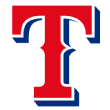
9. Joey Gallo, 3B/OF, Texas Rangers
Analysis: Gallo's power might be the best tool of any player on this list. It is an 80-grade, game-changing pop that is as clear in batting practice as it is during games. His six major league home runs covered 2,584 feet, according to the ESPN Home Run Tracker, with the hottest one coming off the bat at 114 mph.
The problems start, however, when the home runs stop. As expected, advanced pitching tore apart his average and sank his on-base percentage, even though he walked at an above-average rate. He struck out in nearly 50(!) percent of his 123 plate appearances after striking out 40 percent of the time in Triple-A. Unlike Park, who may or may not hit for average, it is widely accepted that Gallo simply will not. That said, hitting .230 with a .330 OBP and 40 home runs will pass. Hitting .200 with a .300 OBP, however, is not going to fly for long.
Defensively, his arm is nearly as good as his power, which allows him to play at third base or in a corner outfield, lending to some positional flexibility. He turned 22 in the offseason, so there is still time for the improvements needed to make him a star.
Mid-March update: The most powerful man in baseball will continue his quest for more contact in Triple-A. He will get back to the majors via his own improvement or due to an injury at the top level.
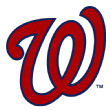
10. Trea Turner, SS, Washington Nationals
Analysis: Opinions differ on Turner's ultimate ceiling, but nearly everyone agrees he is the best option the Nationals have at shortstop, and it seems silly that he will have to pass Danny Espinosa and the ghost of Stephen Drew in order to get the job. Meanwhile, a little competition never hurt anyone, and Turner's ability to hit and run should set him apart from the veterans ahead of him. Washington had to wait half a season after acquiring Turner from San Diego via Tampa Bay before getting a first-hand look at their future shortstop.
Regardless of level or organization, Turner continues to hit and impress on the bases, save for the inconsistent playing time he received with the major league club at the end of the year. The mechanics of his swing are not perfect, but the sum of all parts produce a plus tool. The power output is likely limited by a wiry base. Though he is not a standout defender at shortstop, he is adequate enough to play the position with tremendous foot speed as a fielder and runner. It should not take long before the "Mr. Steal Your Base" nickname catches on.
Mid-March update: Turner will be the Nationals' shortstop at some point this season, but after a rough spring it will probably not be on Opening Day.
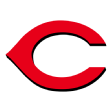
11. Jesse Winker, OF, Cincinnati Reds
Analysis: Winker might be the epitome of how this list differs from conventional prospect rankings. He is a fine prospect by all accounts, and worthy of top-50 inclusion. He is limited defensively -- likely to left field -- and is not much of a runner otherwise. Those factors limit his ceiling quite a bit.
What makes him a top-50 prospect in the real world but a top-15 fantasy prospect is his ability to put barrel to ball. Winker is a hitter above all else. He has the chance to hit near the .300 mark, with 15 or more home runs. Also factoring in to his placement here are the playing time and ballpark factors. The Reds are set to play an uninspiring platoon in left field, and the Great American Ballpark is an offense-friendly environment. Once the clocks for service time and super-two arbitration pass, Cincinnati should let the kids play, and Winker should be one of the first to get the call.
Mid-March update: As expected, Winker will start the season in the minors. Although he could probably hold his own in left field right now, the Reds' are not going to contend and the business math says this is the smart move.
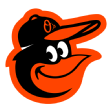
12. Hyun-Soo Kim, OF, Baltimore Orioles
Analysis: Our second KBO import, Kim comes to the states with a drastically different profile than Park. However, he brings similar uncertainties with him, as we are still learning how players transition between the two leagues. The recently turned 28-year-old is penciled in as Baltimore's primary left fielder. His reputation as a line-drive hitter with on-base chops might land him a spot at the top of the order, which increases his value with hitters like Manny Machado, Chris Davis and Adam Jones behind him.
Still, some wonder if his swing will translate against sliders and changeups diving away, and it is unlikely he will walk at the same rate he did in Korea. This takes some luster off his sparkling .438 OBP from 2015. If he can maintain just a decent amount of his previous output, he has the chance to rack up plate appearances and runs scored in what looks to be a solid lineup.
Mid-March update: After an 0-23 start to the spring, Kim has looked more comfortable as of late. He should get considerable time at -- or near -- the top of Baltimore's lineup.

13. Josh Bell, 1B, Pittsburgh Pirates
Analysis: Once again, getting production from first base was an issue for the Pirates last season. This winter, they signed John Jaso to platoon with incumbents Michael Morse and Sean Rodriguez. Offensively, that seems like a fine plan. However, it gets dicey from there. Jaso, a former catcher, is a fine left-handed hitter but is not much of a defender, and his next start at the cold corner will be his first. He also has missed significant time because of injury during the past three years. Morse is no dynamo defensively, and Rodriguez is better served in small doses.
Enter Bell, who is a hitter. He is a big man, with a potentially big bat. The frame and strength have not translated into home runs yet, but the hit tool is a plus, as is his understanding of the zone. Unfortunately, like Jaso, he is a first base convert, and the reviews last season were unkind -- to be nice. He is a decent athlete, so time and repetition will go a long way in fixing that. If so, he could be ready by the middle of the season.
Mid-March update: The Pirates will roll with a hodgepodge of veterans at first base to start the season while Bell, one of the best pure hitting prospects, continues to work on his defense at the cold corner on Triple-A.
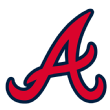
14. Hector Olivera, OF/3B, Atlanta Braves
Analysis: One of the more decorated international signings from a season ago, Olivera signed for $62 million with the Dodgers last spring. That was the last bit of good news he received all year. His arrival to the U.S. was delayed into the regular season. Once he arrived, he was rushed into game action -- in which he struggled -- and then suffered a variety of minor injuries. As if that were not enough, during the same time he was traded from Los Angeles to Atlanta. He made his MLB debut in September with modest production, but the year itself was a loss.
Many believe the 30-year-old will ultimately end as a bust due to the original contract and questions about his ability to catch up to big-league pitching, as well as durability issues. As valid as those points are, I am willing to grant somewhat of a reprieve on last season and look forward. The Braves are paying him to play -- probably left field, with some third base mixed in -- which means he should get plenty of opportunities to hit. Although a reading on the hit tool remains up in the air, his power should hold, and that could mean 20 or more home runs with the chance to drive in some runs from the middle of the order.
Mid-March update: With a more traditional off-season, and the benefit of a full spring training, Olivera is showing more of what Atlanta hoped for. He figures to be in the daily lineup.
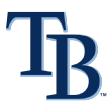
15. Blake Snell, LHP, Tampa Bay Rays
Analysis: In search of upgrading the roster at another position, the Rays have spent most of winter shopping one or more of their major-league starters, with the idea that Snell will join the rotation sometime in early 2016. That time probably will come after the super-two arbitration clock runs out of batteries.
Snell is a two-time pitcher of the year in the Rays organization, which drafted him in 2011. Leading with a mid-90s fastball from the left side, he compiled a 1.41 ERA across three levels in 134 cumulative innings in 2015. He tosses a big, looping curveball and continued to make strides with the changeup. His control was greatly enhanced, perhaps as a byproduct of maturing and opening up a bit more to instruction. The upside for a strikeouts -- and maybe ERA -- boost is tremendous.
Mid-March update: The left-hander will open the season with Durham, biding his time until deadlines pass.

16. Jose Peraza, 2B/SS, Cincinnati Reds
Analysis: Another staple of last year's weekly top 10 fantasy prospect lists, Peraza is on his third team since we began tracking his progress -- which has not advanced much during the timeframe. A former shortstop with the Braves' organization, he moved across the bag to accommodate the major-league depth chart, and even ventured into center field in hopes of finding an easier way onto the 25-man roster.
He was shipped to the Dodgers during the summer, and made his MLB debut with Los Angeles soon after. He looked primed to be Seager's double-play partner for years to come, until he was traded to Cincinnati, where he is once again behind veterans on the depth chart at several positions. Peraza's stock took a bit of a hit after a mostly stagnant season and limited profile. He should hit for average and steal a ton of bases, but the average will be mostly empty, and his dislike for walks will limit the on-base chances to steal. If/when Brandon Phillips is traded, he should be an immediate starter at the keystone and help fantasy owners in the average, steals and runs scored departments.
Mid-March update: Peraza can play both middle infield positions as well as center field. All positions are currently filled, meaning he will likely play every day in Louisville until the traffic clears.

17. Jon Gray, RHP, Colorado Rockies
Analysis: The third overall draft pick in 2013 made his MLB debut last season, almost missing out on eligibility for this list after tossing 40 2/3 innings. Pitching from a large base, he routinely tossed his fastball in the mid-90s, backing it up with a hard, mid-80s slider and a changeup in the same neighborhood. The slider, previously his prized piece, is a hot-button issue. Depending on what day you see him pitch, it can look like the pitch that carried a previous plus rating down to an average breaking ball without much behind it. The changeup is clearly the third wheel, so the consistency of the slider's quality as well as fastball command is paramount.
Gray missed Keith Law's top 100 list altogether but was ranked No. 33 by Dan Szymborski's ZiPS projection. He will have plenty of opportunities to pitch in 2016, and could approach a strikeout-per-inning pace. Just don't count on much help in the ERA and WHIP categories.
Mid-March update: Gray left his most recent start with an abdominal strain. If healthy, he will be in the Rockies' rotation.

18. Robert Stephenson, RHP, Cincinnati Reds
Analysis: The Reds project to finish near the bottom of the National League standings but will have plenty of intrigue as players like Winker, Peraza and Stephenson are promoted. The right-hander is almost certainly one of Cincinnati's top five starters as it stands today. Strikeouts should come easy, as he already has two plus pitches in his fastball and breaking ball, with a third -- a changeup -- on the cusp of being above average.
On the other hand, a lot of pitchers could crack the Reds' rotation these days, and Stephenson needs more polish. The three C's apply here: consistency, control and command. Once Stephenson can show additional competency in these areas, he should be good to go for a full workload, which could come in late spring or early summer.
Mid-March update: Like Winker, the Reds had little incentive to start Stephenson's service time at this point. The signing of Alfredo Simon also made it easier to send the right-hander back to Triple-A until the club is ready to see him again.
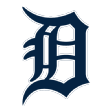
19. Michael Fulmer, RHP, Detroit Tigers
Analysis: Though the Tigers landed only player on Keith Law's top 100, their lone representative is a quality one. Acquired last July from the Mets in exchange for Yoenis Cespedes, Fulmer has yet to throw a pitch at the Triple-A level but is pretty close to being major-league ready as is. He owns a plus fastball that gets in the upper-90s and lives comfortably a few ticks lower. The other plus offering is a rugged slider that should have no trouble generating outs. Similar to many other prospects, the off-speed pitch is third in the order. Meanwhile, Fulmer's changeup is solid, if not better. To put a ribbon on the package is above-average control of the arsenal.
The one drawback is durability. He has yet to throw 130 innings in a season, has dealt with arm issues in the past and does not have the smoothest delivery. Starting the season in the minors is not the worst thing, as his early-season workload can be monitored and manipulated. Once called up, he should help across the board as a middle-of-the-rotation guy.
Mid-March update: Fulmer will begin the season in Toledo, working on ancillary things and refining his changeup. He is still on track to pitch in the majors in 2016.
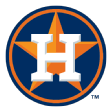
20. A.J. Reed, 1B/DH, Houston Astros
Analysis: Reed flat-out dominated the competition last season. He mashed in Double-A to the tune of .332/.405/.571, with 11 home runs in 53 games, proving his start to the year in the High-A California League (.346/.449/.638, 23 HR, 81 RBIs in 82 games) was not simply a product of his environment. The combined production earned him ESPN Prospect of the Year honors for 2015.
Reed might not continue to hit for as high of an average at the top level, as reports on his bat speed vary. What he should do is hit a lot of home runs and post solid on-base percentages as a first baseman or designated hitter. The Astros owe Jon Singleton a few million dollars, which means they probably will give him a fair chance to earn that money first. From there, Reed may be their next best option.
Mid-March update: The slugging prospect is more likely to make his Triple-A debut than his big-league debut at this time. Injury or ineffectiveness at the top level could expedite his arrival in Houston.

21. Nomar Mazara, OF, Texas Rangers
Analysis: Mazara is a top-10 prospect overall -- and even top-five, to some evaluators. He has the prototypical corner outfield profile, and could hit between .275 and .290, and approach 30 home runs as a regular. He has filled out quite a bit since his then record-setting signing in 2011 with large, strong paws, and should tap into some of that bulk as he advances. He hit extremely well across three levels last season, including a late-season stint in Triple-A.
The reason he drops down on this list is he is probably best served spending most of the year back in Round Rock, and the Rangers have options in the outfield, including the No. 9 prospect on this list. Nevertheless, the tools are too loud to ignore in case of a surprise promotion, so keep the name at the front of your mind.
Mid-March update: Mazara, 20, will continue to gain more experience in Triple-A. Injuries can always change plans, but it is likely he spends plenty of time in Round Rock.
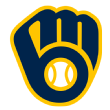
22. Jorge Lopez, RHP, Milwaukee Brewers
Analysis: After several seasons honing his craft at the lower levels of Milwaukee's system, Lopez made the leap from Double-A to the majors, tallying two starts at the end of 2015. The former second-round pick throws the heater in the range of 92-95 mph, with a low-80s hook and a tantalizing changeup to fend off left-handed hitters.
He has put on about 20-25 pounds since his time at Caguas Military Academy, and now projects to be a three-pitch starter capable of taking the ball 30 times a year. There is top-of-the-rotation upside, if he can make some minor improvements in control and command. A successful audition in the middle of the 2016 season could put him in line for a full-time gig in 2017.
Mid-March update: Although he finished 2015 in the majors, Lopez will start the 2016 season in the minors. He should be near the top of David Stearns' call sheet in the event of an opening in the rotation.

23. Brett Phillips, OF, Milwaukee Brewers
Analysis: The Astros paid a premium for Carlos Gomez at the trade deadline last year, with Phillips going to Milwaukee as part of the haul. A tool-box of a player, he does a little bit of everything well, without a true carrying tool. Phillips is a tenacious defender, currently capable of playing center field, with a strong arm that will serve him well should he need to move to right.
Offensively, he has an above-average hit tool with a good approach, average or slightly better pop and the speed to move once aboard. This might be bullish, but there is the chance of a 20/20 season sometime very soon. The Brewers will attempt to get by this season with a bandage covering their opening in center field. A strong start by Phillips might entice them to rethink that plan.
Mid-March update: Phillips will likely join Lopez in Colorado Springs. He is still on track to be the Brewers' starting center fielder 2017, but could receive a sneak peek if he looks ready sooner.

24. Mark Appel, RHP, Philadelphia Phillies
Analysis: Twice selected in the first round, once as the No. 1 overall, Appel's first major-league pitch will be for a different organization than the one(s) that selected him. The Astros parted with Appel to get Ken Giles this winter. The change of scenery could serve Appel well, as the expectations have now been reset and he will attempt to develop under a new set of organizational philosophies.
As is, Appel can walk into a big-league rotation as a back-end starter with a plus fastball, firm slider and workable changeup. He is probably better served trying to re-incorporate a sinker into the mix, as his traditional fastball tends to flatline to the plate. He has OK control at the moment. As mentioned, he could be the Phillies' third- or fourth-best starter right now, but with some improvements and increased consistency developed in the minors, he can once again approach upside more fitting of his draft status.
Mid-March update: Appel will start the season in the minors, but could be in the Phillies' rotation before his 25th birthday in mid-July.

25. Trevor Story, SS, Colorado Rockies
Analysis: Once the heir apparent to Troy Tulowitzki, Story is no longer even the best shortstop prospect in the Rockies' system. That honor now belongs to Brendan Rodgers. That said, Story might get a season or two to prove himself at the position before Rodgers is ready. Jose Reyes is currently atop the Rockies' depth chart, but his status is clouded by potential suspension. And even if available, Colorado probably would prefer him on someone else's roster. This might give Story the window of opportunity mentioned above.
Far from a star, the 23-year-old would be an above-average placeholder of the six spot. He can make the ordinary play, but is unlikely to steal Nolan Arenado's thunder on the left side. Offensively, he has solid power for the position, and can move pretty well. The approach is iffy however, and he might hit only .250 in a good year. With the backing of Coors Field, he could be a sneaky source of production without the price tag of other shortstops.
Mid-March update: Story's stock is considerably higher than his initial ranking. He has had a great spring and Jose Reyes remains on indefinite leave pending the outcome of his legal situation. Story is the favorite to win the Rockies' shortstop job.
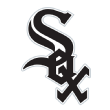
26. Tim Anderson, SS Chicago White Sox
Analysis: Here is another case where the prospect is probably the best option in the organization, but for one reason or another figures to start the season playing in the minor leagues. Anderson, who has tremendous natural ability, has made huge strides during the past year transitioning from raw athlete to baseball player. He has 70-grade speed, and has so far shown the defensive chops to stick at shortstop.
Despite an overly aggressive approach -- he walked in only four percent of his plate appearances -- he maintained a .312 average as a Southern Leaguer last year. Anderson's power profile is limited, but he could hit .275 as a bottom-of-the-order hitter -- if his on-base ability doesn't improve -- while swiping 50 or more bags.
Mid-March update: For the second season in a row, Jimmy Rollins will keep the seat warm for a talented prospect. Anderson has all the skills, but experience and maturity is the key here.

27. Aaron Blair, RHP, Atlanta Braves
Analysis: Part of the massive haul the Braves received in exchange for Shelby Miller this winter, Blair comes to Atlanta ready to contribute to the big-league team immediately. The former hurler for Marshall's Thundering Herd tosses a heavy, low-90s fastball that generates ground balls in bunches. His right-handed changeup is a plus offering, and can be used to combat the opposite hand. His curveball is a slightly below the off-speed but shows promise.
Though he might not rack up strikeouts, his ability to throw strikes and induce ground balls should lead to a tidy ERA with a solid WHIP and a lot of innings pitched.
Mid-March update: Blair was sent to the minors, but is the Braves' de facto No. 6 starter. He will be the first call if there is an opening.
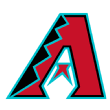
28. Braden Shipley, RHP, Arizona Diamondbacks
Analysis: Blair's former teammate overcame mechanical difficulties to post a 2.66 ERA in his final 14 starts of the season, and is poised to make his big-league debut at some point in 2016.
They say to always bet on the athletes, and Shipley checks all the boxes. He has a solid, mid-90s fastball followed by a 60-grade changeup and a curveball that is not far behind. Should the changes made in the second half of 2015 stick, he might be the Diamondbacks' first call in the event of an injury.
Mid-March update: Similar to his former teammate above, Shipley will start 2016 in Triple-A; however, is on the short list of replacements if the Diamondbacks need a starter.
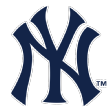
29. Gary Sanchez, C, New York Yankees
Analysis: Sanchez has been a prospect for longer than some professional ballplayer's careers. He finally broke through the Double-A ceiling after spending the majority of the past three seasons in Trenton. Despite that fact, he just turned 23 last December.
Speaking of age, Sanchez seemed to answer some maturity-related questions last season, becoming more dedicated to the craft. He might never be Yadier Molina behind the plate, but will not need to be, provided he hits up to his potential. He has booming power, and should hit for a fine average otherwise. He is currently behind the offense-challenged Austin Romine on the depth chart; however, that order might flip in the event of an injury to Brian McCann.
Mid-March update: Whether he starts the season in Scranton or New York, Sanchez is the real backup plan in case something happens to Brian McCann.

30. Max Kepler, OF Minnesota Twins
Analysis: The German-born Kepler has made great strides as a player since signing as a teenager in 2009. Now 23, he is on the verge of becoming a contributor at the highest level. He briefly made his debut with the Twins on the heels of a breakout campaign in Double-A. In 482 plate appearances, he hit .322/.416/.531 with 54 extra-base hits.
A freakishly good athlete, he is expected to continue to hit well at the upper levels with a lot of extra-base hits, even if he maxes out in the mid-teens in home runs. Kepler is a good defender, capable of tracking balls down in center field. But with former Chattanooga Lookouts teammate Byron Buxton in center, he probably will shift to right as another former teammate, Miguel Sano, tries his hand in left.
Mid-March update: Kepler continues to look the part of a future contributor at the highest level. However, the Twins have enough outfielders to let him get more reps in Triple-A instead of rushing him.

31. David Dahl, OF, Colorado Rockies
Analysis: Dahl was involved in one of the scariest moments of last season, when he was part of an outfield collision that resulted in a lacerated spleen. A testament to his dedication, he opted to have the spleen removed to make a quicker return to the field.
The 10th overall pick in 2012 does mostly everything well and with ease. He has plus bat speed and running ability to match. He is true center fielder capable of putting up high averages and a good number of extra-base hits. His approach is currently too aggressive for the top level, but his other skills should get a boost from the Coors Field environment.
Mid-March update: Dahl will start the season in the minors, making up from lost time after removing his spleen last season. It would not be a surprise if he is hitting liners around Coors Field before the end of this season.

32. Aaron Judge, OF, New York Yankees
Analysis: Big. The adjective describes both Judge's size and his ability. A very atypical prospect, the near seven-footer has rare athletic ability. Though he has the athleticism to track down balls in center field, he probably will break in as an above-average defender in right.
The frame also gives him an astounding amount of raw power, 70-grade at its apex. The pop has not quite transitioned in game action yet, but there have been flashes. Although the long limbs and levers will make it difficult to maintain high averages, he could hit .265-.275 and smash 30 home runs playing half his games in the Bronx.
Mid-March update: For now, Judge will work on his new leg kick in Scranton. If it clicks, a mid-season power boost could be coming to the Bronx without paying the trade deadline premium prices.
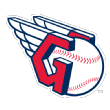
33. Bradley Zimmer, OF, Cleveland Indians
Analysis: It did not take long for Brad to overtake his brother Kyle as the top prospect in the family. This past August, I suggested "if you are not familiar with Zimmer, allow yourself some time to get to know him." On the strength of a great first full season as a professional, the former San Francisco Don went from a fringe top-100 prospect all the way to 21 on Keith Law's most recent ranking.
Another gifted athlete, he plays a smooth center field with long legs that helps him cover ground in the outfield and on the bases. He started to tap into some of his power, collecting 16 home runs across two levels in 2015. As a full-timer, he has 20-home run potential, with the chance at 30 steals and a solid average.
Mid-March update: Not considered for the vacated center field spot this spring, Zimmer could force his way into the conversation by picking up where he left off last season.

34. Lucas Giolito, RHP, Washington Nationals
Analysis: At minimum, Giolito enters the season as the top right-handed pitching prospect, and is probably the top overall pitcher in the minors, although our next name has some claim to the title as well. The stuff invokes superlatives and expletives alike. The upper-90s fastball is double-plus, and the curveball is right around the same grade. The changeup, which is third in the order and would be the second-best pitch in most arsenals, has come on strong as the Nationals have keyed in on the development of the off-speed pitch.
Giolito wraps up the package with above-average control that should soon turn into above-average command if he is not already there. Washington will continue to be conservative about his usage, which why he is not at the top of this list. But make no mistake, this is an ace profile.
Mid-March update: Giolito looked close to MLB-ready during his brief tour of the Grapefruit League. The youngster has been reassigned to minor-league camp where the Nationals can start to monitor his workload before deciding when and how to break him in as a big leaguer.

35. Julio Urias, LHP Los Angeles Dodgers
Analysis: The best left-handed pitching prospect in the game, Urias' low ranking has nothing to do with talent, and much to do with opportunity. He has three plus or better offerings in his fastball, changeup and curveball. He also can throw them for strikes, and is to the point where we can start talking command.
He drops to the bottom half of this list because he might not reach the majors this season. For a variety of reasons, he has yet to cross the century mark in terms of single-season innings, so the Dodgers will be diligent in cultivating his arm with regard to workload. At the same time, should he somehow sneak on the 25-man roster, he is immediately worthy of you consideration.
Mid-March update: Though the former phenom is more mature physically, and also in terms of pitching ability, he is not quite ready to join what is an already shaky Dodgers' rotation.

36. Jorge Alfaro, C, Philadelphia Phillies
Analysis: A key piece of the Cole Hamels trade in July, Alfaro's 2015 was a wash because of left ankle surgery. He has two tools that grade out as 70 or better, with a cannon for an arm and some of the loudest raw power you will see; especially from a potential backstop.
Potential is the key word there, as new catching coach John McClaren will have to advance his ability to call games and improve as a receiver. For his part, the 22-year-old is already soaking up what knowledge he can from the man he is trying to replace, Carlos Ruiz. Chooch's job is safe for this season, but a strong showing at the plate and growth behind it could have Alfaro in Philly before long.
Mid-March update: Fully recovered from ankle surgery, Alfaro will start climbing the organization ladder from the Double-A rung. He could move quickly on the strength of his arm and the power in his bat.

37. Marco Gonzales, LHP, St. Louis Cardinals
Analysis: After cracking the major-league roster in 2014, Gonzales spent most of last season in Triple-A working through and around soreness in his throwing shoulder. He was limited to 19 total starts, including one for the Cardinals. Now, he's well-rested coming into camp and he starts sixth on the depth chart in the rotation, probably needing someone else to be injured to get a chance to start back in the bigs.
Going back to Memphis would not be a terrible fate as he eases back into a starter's workload. The lefty has two secondary pitches that grade as plus, with a changeup leading the way. His fastball is pedestrian, and he will need to command and control it well for the other items to work. Regardless of role, he should pitch for St. Louis in 2016, with the potential for being a viable fifth starter a completely realistic outcome.
Mid-March update: Gonzales is looking to bounce back from a lost 2015 campaign. He will start the journey in Memphis, but almost certainly end it in St. Louis.

38. Richie Shaffer, 3B/OF, Tampa Bay Rays
Analysis: It's tough to get a read on how the Rays feel about their former first-round pick. After a slow rise through the system, Shaffer broke out in 2015, showing the power potential he had with Clemson. He hit 30 home runs across three levels last year, with four coming at the highest.
The swing and approach will leave him susceptible to strikeouts. In fact, he might top out as a .250 hitter, but with decent walk rates and the chance at 25 home runs with regular work. The Rays should probably hand him the keys to first base and let his power shine. Instead, the team has incumbent James Loney and brought in Logan Morrison and Steve Pearce this winter. It might take a couple of spring trades to get him the opportunity for which he appears ready.
Mid-March update: Even after a breakout campaign, and within an organization looking for power, Shaffer is destined to return to Durham, where he will continue his quest for Mike Hessman's minor-league home run record.

39. Jake Thompson, RHP, Philadelphia Phillies
Analysis: The Hamels trade has the chance to be an all-timer for the Phillies, with Thompson as another talented piece of that puzzle. The big Texan has a prototypical starter's frame and could be a consistent source of innings pitched and strikeouts.
He tosses a low-to-mid 90s fastball, with a good idea of where the pitch is going. His future out-pitch is a slider that already grades as plus, and can be a bit better. Likewise, his average changeup stands the chance to improve as well. He is more of a No. 3 than a No. 2, but is no less than a No. 5 as it stands today.
Mid-March update: Thompson is close to MLB-ready, but is ticketed to start in Lehigh Valley. Along with Appel and Zach Elfin, all three could join the big-league rotation at some point this summer.

40. Jose De Leon, RHP, Los Angeles Dodgers
Analysis: De Leon is at the same time in the best and worst organization for himself. On one hand, the Dodgers are a great spot for him; a team that took him in the 24th round, and has helped him slowly develop into a top-100 prospect without much fanfare or need to rush. On the other hand, he is probably seventh or eighth on an extremely deep depth chart, and will need some outside help if he is to make his debut in 2016.
The Robin to Urias' Batman, he did something his lefty counterpart has yet to do: Pitch 100 innings in a season. He hides his low-90s fastball well, and has been riding a plus changeup through the system. His curveball is just about average. The development of the third pitch, along with tightening up the fastball location, will determine if he is can be a low-end No. 2/No. 3, or a solid fifth starter.
Mid-March update: Urias' right-handed compatriot is in a similar situation; both are talented future plays, but not ready to make the leap just yet.

41. Brandon Drury, 2B/3B/SS, Arizona Diamondbacks
Analysis: Drury's game will generate terms like "gamer," "grinder" and other adjectives for "good player who tries hard without standout ability." He is actually the type of prospect I like more at the highest level in a Logan Forsythe type of way.
He has decent power from the right side, and could top 15 home runs if given enough plate appearances. Like the rest of the game, the hit tool is a solid average. He is versatile enough to play up the middle and at hot corner, but looks more like a fit for the keystone. The infield prospects Arizona has graduated in recent years have turned out mostly disappointing, which leaves room for Drury to take someone's playing time.
Mid-March update: Drury has had a great spring, looking like a vital member of the 25-man roster with the potential to play second, third and perhaps some outfield too.

42. Hunter Renfroe, OF, San Diego Padres
Analysis: Renfroe's prospect status took a bit of a hit as his progress was a bit stagnant at the Double-A level before picking it up once he was promoted to El Paso. The scale of discipline falls heavily on the strikeout side, a fact that is not likely to change as the level of competition increases. With the average-ish hit tool, Renfroe will have to hit for power to be a regular in San Diego.
The good news is that the big boy out of Mississippi State could be the Padres' best power hitter since Adrian Gonzalez. Despite his size, he moves well in the field, and along the bases. He will get a chance to impress decision-makers in camp, and perhaps give even extra incentive to move some of the team's overpaid veterans (if they can find a buyer, of course).
Mid-March update: This could be the year Renfroe makes his move to the majors. For now, he will start in El Paso where he finished the season on a strong note.

43. Lewis Brinson, OF, Texas Rangers
Analysis: Brinson is the type of prospect that scouts dream about. Long and athletic, he has plus speed and power, and plays above-average defense in the middle of the outfield. A true center fielder, the 29th overall pick in 2012 hit well across three levels in 2015, which ended with Triple-A Round Rock. He showed an improved approach, despite playing most of the year as a 21-year-old.
There is legit 30-30 potential, provided he can continue to improve in 2016, with the chance to become an MLB regular in 2017.
Mid-March update: Round Rock's lineup will feature Brinson, Gallo and Mazara. Brinson is likely behind Gallo in the pecking order, and about even with Mazara.
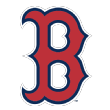
44. Yoan Moncada, 2B, Boston Red Sox
Analysis: Moncada spent most of 2015 adjusting to life and the game in the United States; quite the task for someone who will not turn 21 until right around Memorial Day. The hype train has lost a bit of steam, but we're talking going from superstar to All-Star, which is still plenty of talent. In an age when we have a lot of switch-hitters in name only, Moncada is a legit force with the stick from both sides.
I believe he will approach the 20-homer mark as he matures both physically and in terms of his understanding of advanced pitching and the American strike zone. As mentioned above, he is of an All-Star caliber; however, the Sox will make sure to bring him along at the correct pace, which limits his value for fantasy owners in 2016.
Mid-March update: Moncada is one we will talk about all year. He is a star in the making, but Boston has no reason to rush him.

45. Manuel Margot, OF, San Diego Padres
Analysis: Acquired in the Craig Kimbrel trade, Margot instantly became the Padres' prized minor-league prospect. A true center fielder defensively, he projects to settle near the top of the lineup as a source of extra-base hits and steals. He couples an above-average hit tool with an advanced feel for the zone that should result in a good on-base percentage. He is also a plus runner that could challenge for a stolen-base title.
His thin frame probably will limit his power to the gaps -- especially in Petco -- but it would not be a shock if he hit 10 or so home runs at some point. Even without the long ball, he should top 50 extra-base hits otherwise. Like Renfroe, he will have to wait until the Padres clear some space, but could be the central player in a revamped outfield soon.
Mid-March update: The glove is ready; however, Margot will start in Triple-A hoping to get the bat ready for a late-season call.

46. Jorge Polanco, SS, Minnesota Twins
Analysis: There are certainly more talented players left off this list, but Polanco has some useful skills, and perhaps more important, a bigger window of opportunity than others who were omitted.
He is a high-contact switch-hitter who is capable of producing solid averages from both sides. The left-handed stroke is more conducive to power, but the output is limited to about a dozen homers in total. He is a decent runner that could rack up double-digit steals. The path of least resistance currently runs through shortstop, a position at which he is playable. A solid average, 10-12 home runs and little more in steals makes him a player to remember in case of a need during the season.
Mid-March update: Polanco will start the season in the minors where he belongs. That said, he could take over several positions in the infield in the event of an injury.
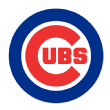
47. Willson Contreras, C, Chicago Cubs
Analysis: Just what the Cubs need: another talented position player on the verge of making an impact at the highest level. How is this for a season? Contreras, who was unranked on Law's top 100 last year, vaulted up to 27th this year on the heels of a breakout campaign. Playing for Double-A Tennessee, he hit for a cool .333 in 521 plate appearances.
The contact skills are real, and he has a keen understanding of balls and strikes. Those attributes should lead to healthy averages and on-base percentages. His career high in home runs is 11, set back in 2013, and that seems like a decent cap as he is currently packaged. Aside from the offense, he has a highly regarded arm, and nuance for the finer parts of catching. A first half that resembles anything like last year could land him in Chicago for the summer.
Mid-March update: Contreras will call Iowa home for the next few months. Even with the presence of David Ross and Kyle Schwarber, he will likely be considered for a call-up should something happen to Miguel Montero.

48. Jeff Hoffman, RHP, Colorado Rockies
Analysis: The East Carolina product was in the mix as the top pick in 2014, but instead spent the year recovering from Tommy John surgery. He returned to the mound in early 2015, and was promptly traded from Toronto to Colorado in the Troy Tulowitzki deal.
Hoffman boasts a pair of plus pitches, with a mid-90s fastball and a knee-buckling hook. His changeup needs work as it can resemble a half-hearted fastball. He needs some polish in terms of location, but as noted several times before, it is wise to bet on the athletes, and Hoffman fits the mold. Despite the missed time and lack of experience as a professional, he could be in the majors by the end of this year.
Mid-March update: The right-hander could move quickly through a thin system, especially considering that he is another year removed from surgery.

49. Orlando Arcia, SS, Milwaukee Brewers
Analysis: Arcia, a top-10 prospect overall, will be the Brewers' regular shortstop. The question is when. The club already cleared a spot for him by trading Jean Segura earlier this month. Time and Jonathan Villar are all that stands between him and the six spot.
Arcia is a dynamic defender, and will regularly compete for year-end accolades. He projects as both an above-average hitter as well as a runner. Power is not a big part of his game, although he will run into a few homers, and will litter the gaps with doubles and triples. He does not walk much but does not strike out much either. Though he should not be rushed, there is a chance he reaches the majors before he turns 22 in August.
Mid-March update: There is not much separating Arcia from the six spot in Milwaukee. Time and cash considerations are his biggest hurdles.

50. Nick Williams, OF, Philadephia Phillies
Analysis: Another Ranger-turned-Phillie by way of the Cole Hamels swap, Williams is a toolsy outfielder than has apparently made the athlete-to-ballplayer transition during the past 12 months.
He projects as a center fielder when he breaks through, with the aptitude to hit both for power and average as a hitter. From there, Williams should add 10 or more steals as an average runner. Currently, the discipline is skewed too much toward avoiding strikeouts, so his on-base chances will be limited. The Phillies have options in the outfield, yet few with this type of upside.
Mid-March update: Williams is one of several players on this list that could be part of Philadelphia's revival -- which could start as soon as this summer.
